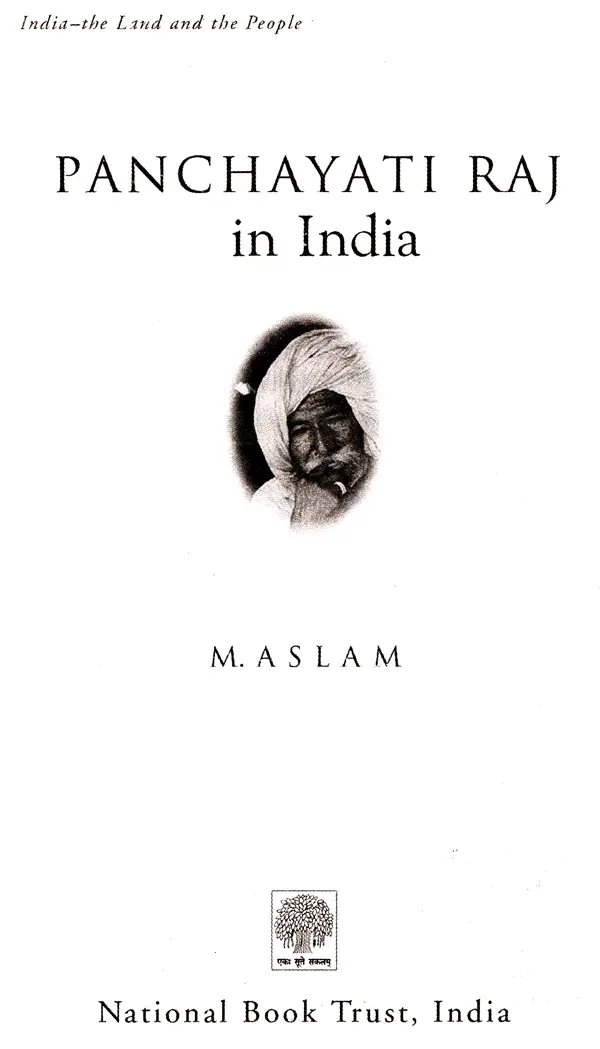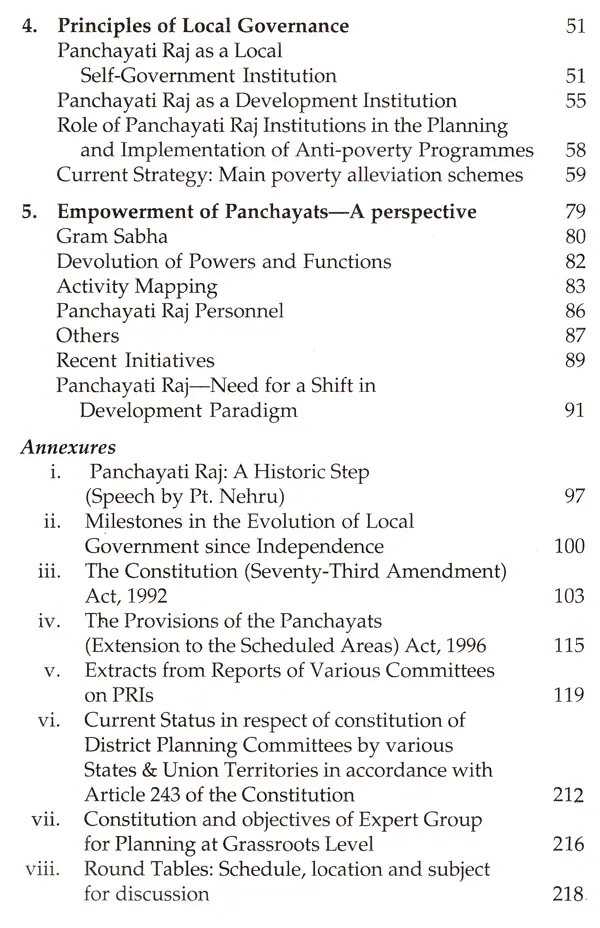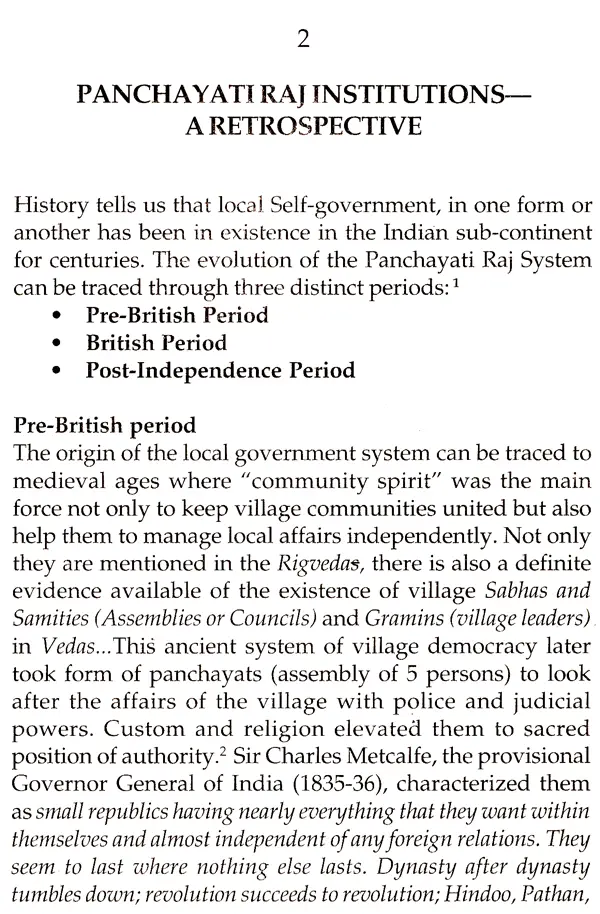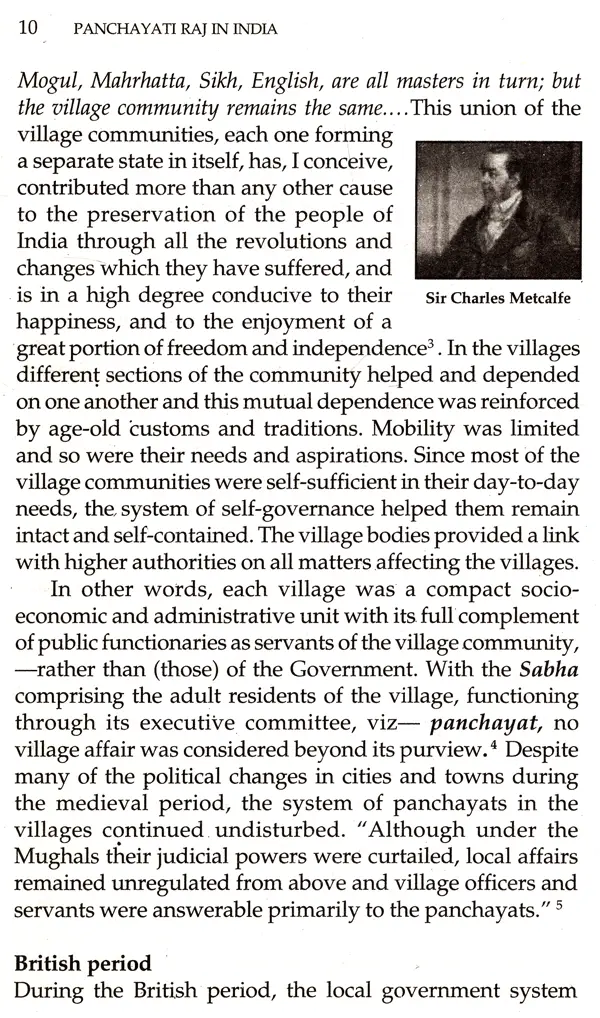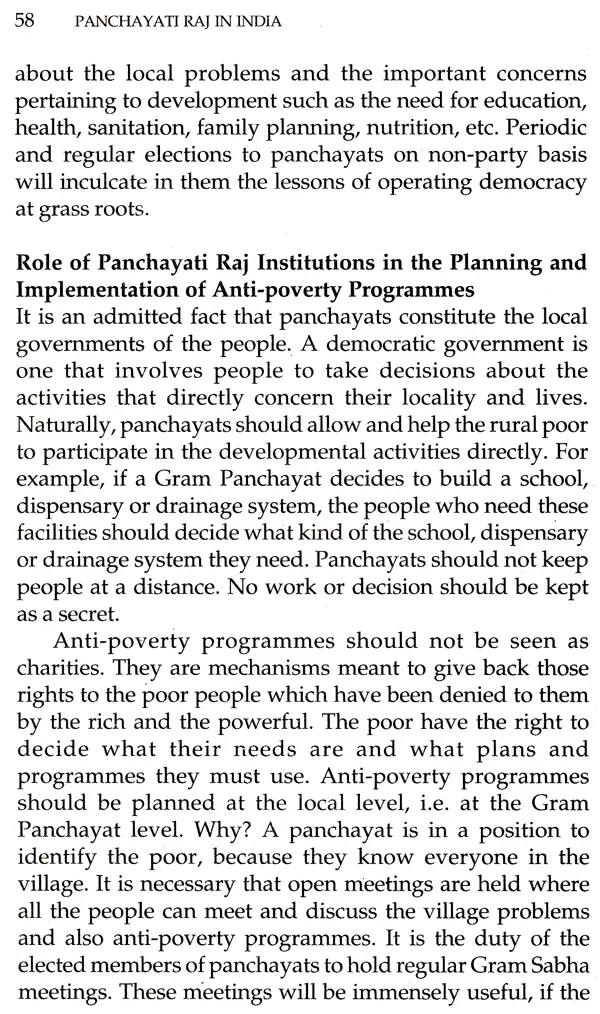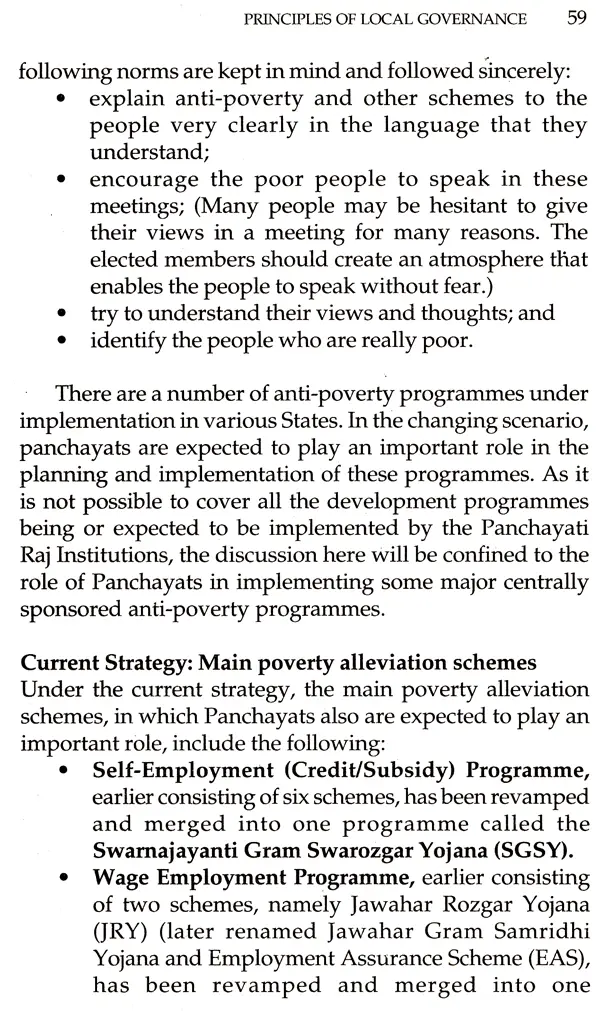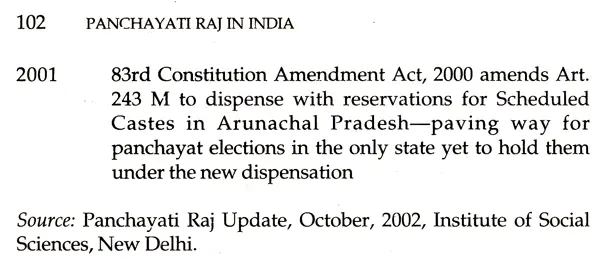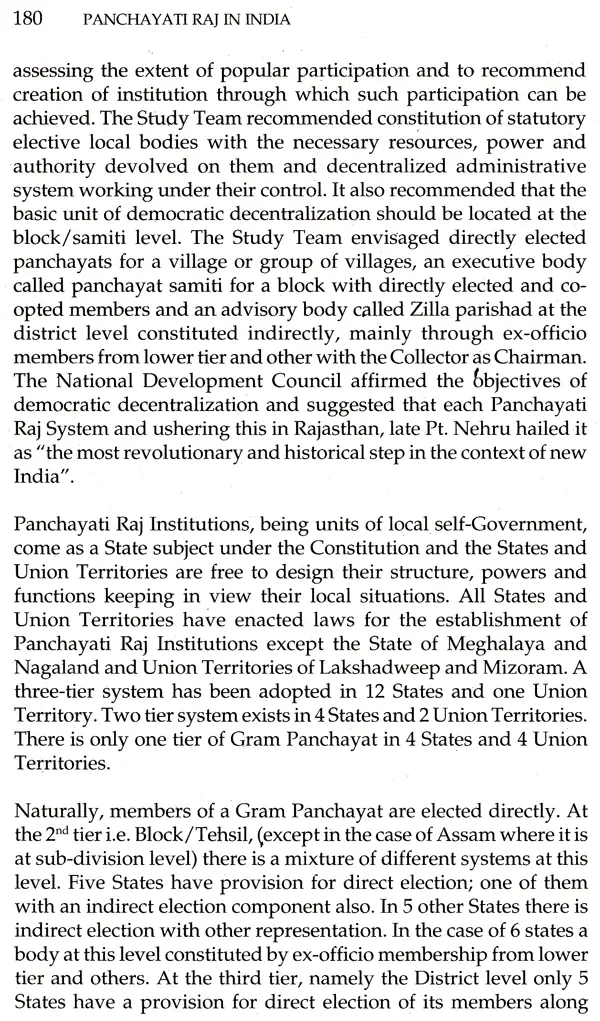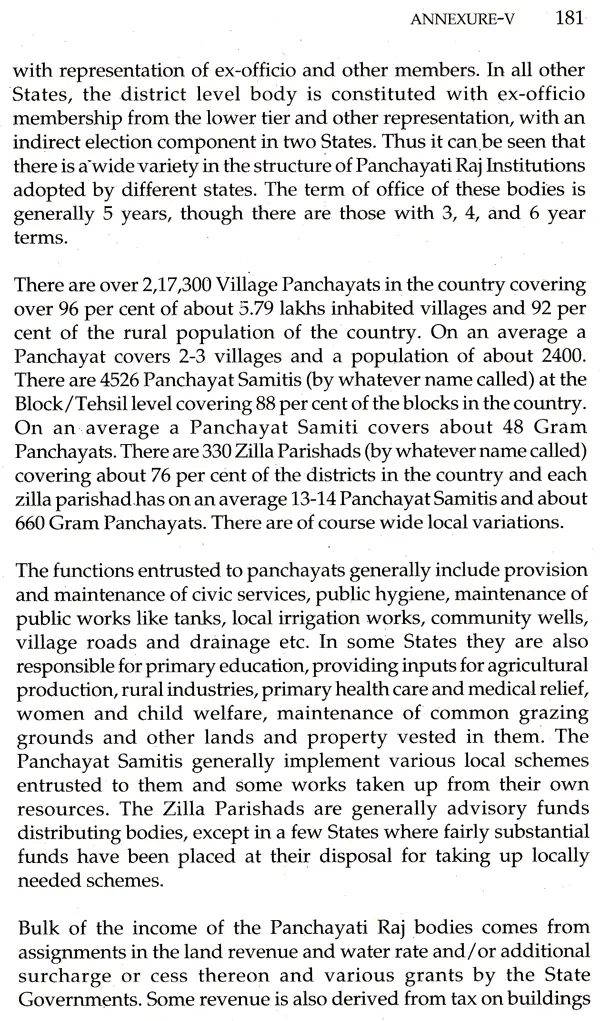
Panchayati Raj in India
Book Specification
| Item Code: | UAF135 |
| Author: | M. Aslam |
| Publisher: | National Book Trust, India |
| Language: | English |
| Edition: | 2007 |
| ISBN: | 9788123751894 |
| Pages: | 217 |
| Cover: | HARDCOVER |
| Other Details | 9.00 X 6.00 inch |
| Weight | 390 gm |
Book Description
The local self-government, as a system, has existed in India since long. Its form may have varied, but its spirit has always been a part of our socio-cultural ethos. In the medieval times, it was seen in the form of a Gram Sabha functioning through its executive committee via Panchayat, a village body able to govern and sustain small communities of people. During the British period, the institution became the instrument of the ruling elite, intended to protect the interests of the British Government. After independence, it was in 1959 that the local self-government system, known as Panchayati Raj took its present shape. The enthusiasm generated by this new form of local self-government, however, did not last long. Conflicting interests at various levels eclipsed the concept as well as its practice. After decades of debate, the Constitutional (73rd Amendment) Act-1992 outlined the task of rejuvenating the Panchayati Raj system in the country.
The institution of Panchayati Raj is now recognised as an important mechanism for decentralizing power and ensuring people's participation in development activities.
Panchayats-the rural local governments of our country got Constitutional protection and sanctity only after the 73rd Amendment in 1993 which led to the incorporation of Part IX and IX A in the Indian Constitution. They have, of course, existed as institutions of local government since ancient times. However, their development as organised Institutions with codified rights and responsibilities has been uneven across the different States of the country, depending upon the political will of successive State Governments as 'local government' is a subject exclusively on the State List in our Constitution. The 73rd Amendment has given a new lease of life to these Institutions in their role as third tier of our governance structure by mandating elections every five years and providing for reservation for women and socially deprived classes. The creation of a new Union Ministry of Panchayati Raj has helped focus on the strengthening and empowerment of these institutions across the country. The vision of Panchayats acting as institution of self government can only be realized if we work towards empowering Panchayats and their Gram Sabhas by devolving the three Fs-specific functions, commensurate finances and accountable functionaries to the Panchayats. This will help our rural populace to access their entitlements through empowerment, thus leading to their enrichment and going a long way towards addressing the concern for a more equitable model of growth for all our citizens.
**Contents and Sample Pages**
